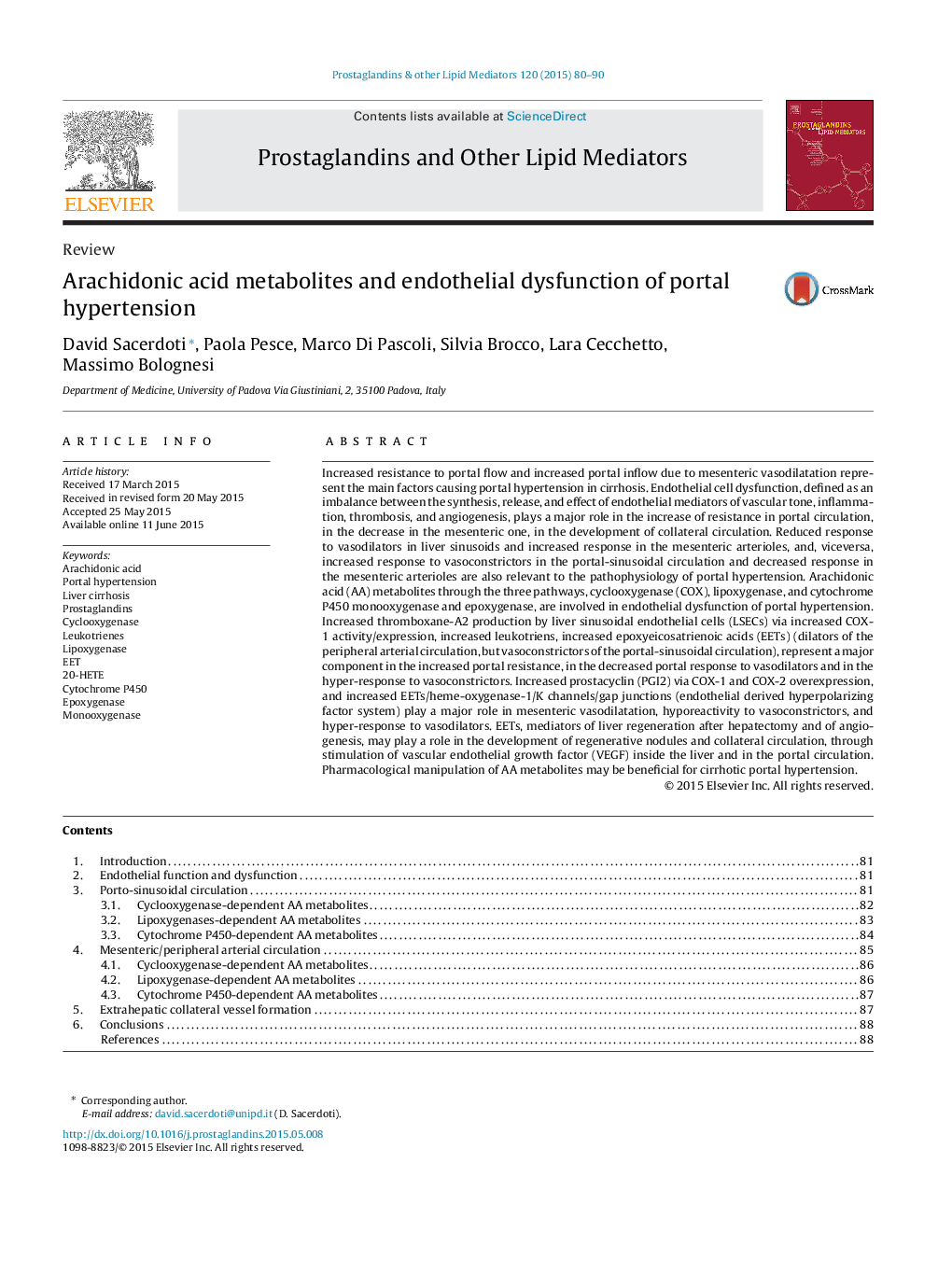| کد مقاله | کد نشریه | سال انتشار | مقاله انگلیسی | نسخه تمام متن |
|---|---|---|---|---|
| 2019545 | 1542211 | 2015 | 11 صفحه PDF | دانلود رایگان |
• Endothelial dysfunction participates in the pathophysiology of portal hypertension.
• Increased EETs, LTs, and TxA2 increase portal resistance.
• Increased EETs and PG12 cause mesenteric arterial vasodilatation.
• Increased EETs may stimulate regenerative nodules and collateral vessels.
Increased resistance to portal flow and increased portal inflow due to mesenteric vasodilatation represent the main factors causing portal hypertension in cirrhosis. Endothelial cell dysfunction, defined as an imbalance between the synthesis, release, and effect of endothelial mediators of vascular tone, inflammation, thrombosis, and angiogenesis, plays a major role in the increase of resistance in portal circulation, in the decrease in the mesenteric one, in the development of collateral circulation. Reduced response to vasodilators in liver sinusoids and increased response in the mesenteric arterioles, and, viceversa, increased response to vasoconstrictors in the portal-sinusoidal circulation and decreased response in the mesenteric arterioles are also relevant to the pathophysiology of portal hypertension. Arachidonic acid (AA) metabolites through the three pathways, cyclooxygenase (COX), lipoxygenase, and cytochrome P450 monooxygenase and epoxygenase, are involved in endothelial dysfunction of portal hypertension. Increased thromboxane-A2 production by liver sinusoidal endothelial cells (LSECs) via increased COX-1 activity/expression, increased leukotriens, increased epoxyeicosatrienoic acids (EETs) (dilators of the peripheral arterial circulation, but vasoconstrictors of the portal-sinusoidal circulation), represent a major component in the increased portal resistance, in the decreased portal response to vasodilators and in the hyper-response to vasoconstrictors. Increased prostacyclin (PGI2) via COX-1 and COX-2 overexpression, and increased EETs/heme-oxygenase-1/K channels/gap junctions (endothelial derived hyperpolarizing factor system) play a major role in mesenteric vasodilatation, hyporeactivity to vasoconstrictors, and hyper-response to vasodilators. EETs, mediators of liver regeneration after hepatectomy and of angiogenesis, may play a role in the development of regenerative nodules and collateral circulation, through stimulation of vascular endothelial growth factor (VEGF) inside the liver and in the portal circulation. Pharmacological manipulation of AA metabolites may be beneficial for cirrhotic portal hypertension.
Journal: Prostaglandins & Other Lipid Mediators - Volume 120, July 2015, Pages 80–90
